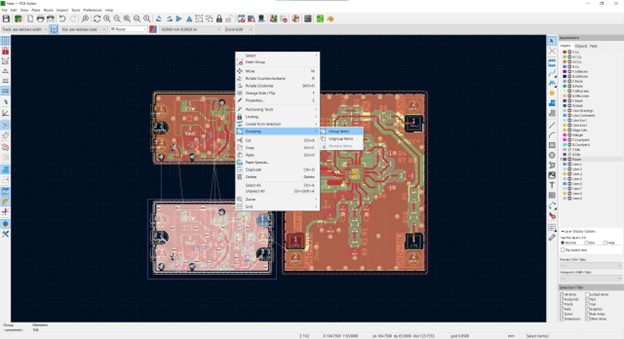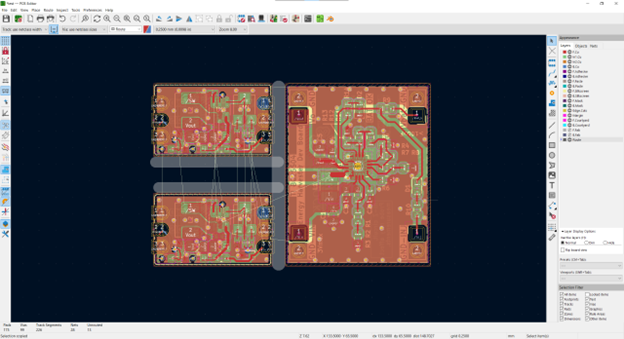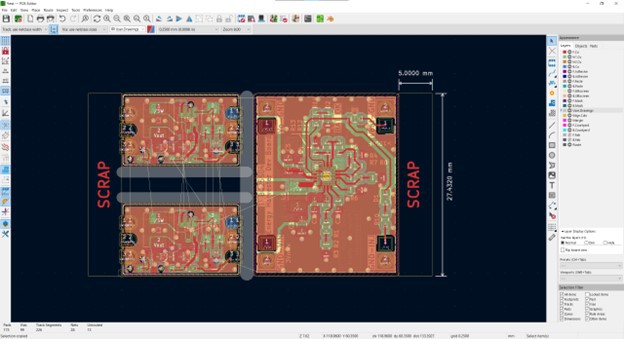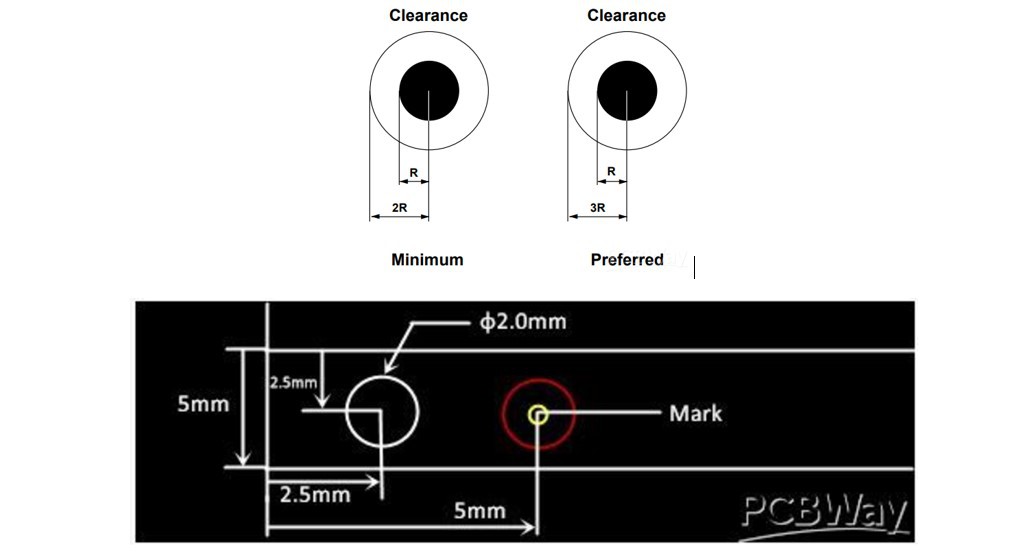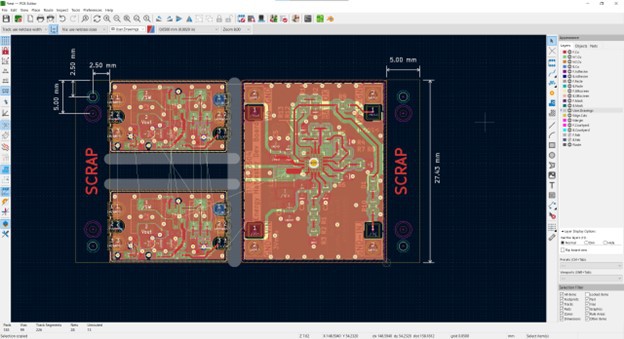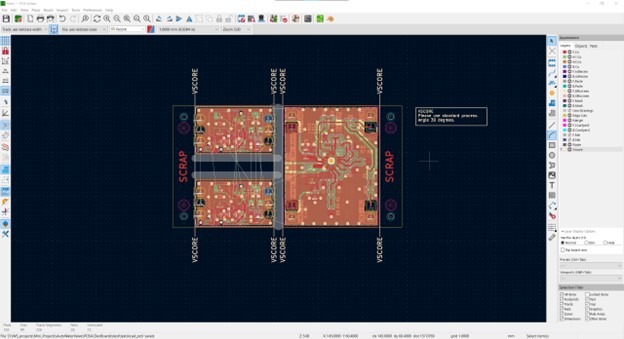These are the settings and calculations I used for this design. I'll add some documentation in the future once I have the boards in hand and can test its features.
Maximum Power Point Tracking (MPPT)
Formula: MPP = R2/(R1+R2)
> Find the solar cell specs
Voc = 5.53V
Vpmpp = 4.46V
> Calculate MPP
MPP% = Voc/Vpmpp = 80.6%
> Determine the resistor divider
R1+R2 = 18MΩ to 22MΩ
R2 = 16.9MΩ
R1 = R2/MPP-R2 = 4.05
R1 = 4.02MΩ
> Recalculate expected MPP
MPP = R2/(R1+R2) = 80.8%
*Ignoring R tolerance*
Battery Undervoltage Protection
Formula: VBAT_UV = VBIAS(1+R3/R4)
> Desired Undervoltage
VBAT_UV = 3.2V
> Determine Resistor Divider
R3+R4 = 9MΩ to 11MΩ
VBIAS = 1.21V to 1.27V
VBias = 1.25V (typ)
R3/R4 = VBAT_UV/VBIAS(min)-1 = 1.64
R4 = 4.02MΩ
R3 = 6.61MΩ = 6.49MΩ
> Recalculate
VBAT_UV = 3.16V to 3.32V
*Ignoring R tolerance*
Battery Overvoltage Protection
Formula: VBAT_OV = 1.5*VBIAS(1+R6/R7)
> Desired Overvoltage
VBAT_OV = 4.1V
> Determine Resistor Divider
R3+R4 = 9MΩ to 11MΩ
VBIAS = 1.21V to 1.27V
VBias = 1.25V (typ)
R6/R7 = VBAT_OV/(1.5*VBIAS(max))-1 = 1.15
R7 = 4.64MΩ
R6 = 5.35MΩ = 5.36MΩ
> Recalculate
VBAT_UV = 3.91V to 4.11V
*Ignoring R tolerance*
Battery Good Logic, VBAT Okay
Formula: VBAT_OK_PROG = VBIAS(1+R9/R10)
Formula: VBAT_OK_HYST = VBIAS(1+(R8+R9)/R10)
> Desired Overvoltage
VBAT_OK = 3.4V
HYST = 3.4+200mV (1.25V is the smallest possible!!!)
> Determine Resistor Divider
R8+R9+R10 = 9MΩ to 11MΩ
VBIAS = 1.21V to 1.27V
VBias = 1.25V (typ)
> VBAT OK Calc
R9/R10 = VBAT_OK/VBIAS(typ)-1 = 1.88
R10 = 3.6MΩ
R9 = 6.19MΩ = 6.20M
VBAT_OK_PROG = 3.29V to 3.45V
> VBAT HYST Calc
((VBAT_HYST/VBIAS)-1)*R10-R9 = R8
R8 = 0.568 = 560k
> Recalculate
VBAT_OK_HYST = 3.48V to 3.65V
*Ignoring R tolerance*
 Jesse Farrell
Jesse Farrell
